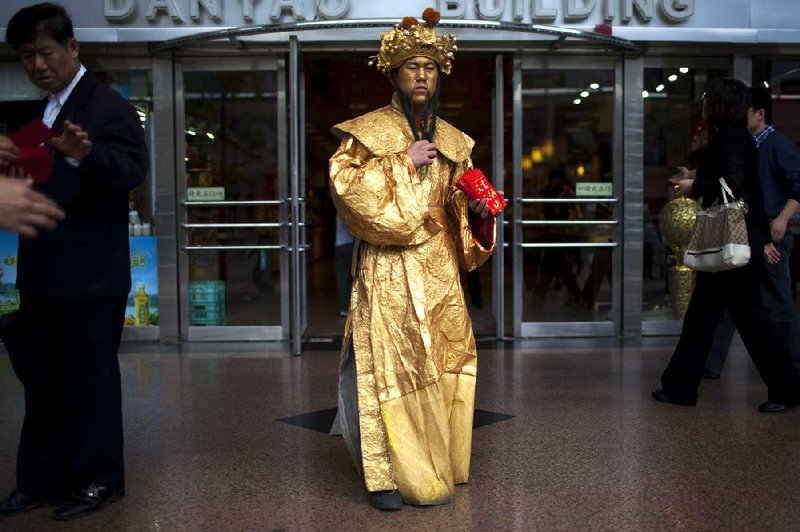LITTLE ROCK — China’s economic growth slowed sharply in the first three months of this year, but recent efforts by policymakers to jump-start its economy, the world’s second largest, appear to be bearing fruit, with industrial and retail activity both rising during March, new data released Friday showed.
The economy expanded 8.1 percent compared with a year earlier, significantly slower than in previous quarters, and a sharp cool down from the double-digit expansion seen in much of the past decade.
That was below analysts’ expectations for an increase of 8.4 percent, and it underlined the problems that China faces on two fronts. Domestically, demand has weakened, and the construction sector has slowed, in large part because of government efforts to curtail breakneck expansion last year. At the same time, overseas demand for Chinese goods has weakened as consumers in the United States and Europe remain worried about job prospects in their home countries.
This has slowed expansion to the weakest level in 11 quarters, the gross domestic product data showed.
However, the rate of expansion from the fourth quarter of last year was healthier than expected: Quarter-to-quarter growth came in at 1.8 percent, topping expectations for an increase of 1.6 percent. Many analysts focus on quarter-to quarter gross domestic product because it gives a clearer sense of the economy’s recent performance than the year-on year comparison.
At the same time, a flurry of statistics for March has looked more positive. Many analysts said that, with the government again tapping the gas pedal, the economy will avoid an all-out crash.
“Green shoots have sprung up in many sectors, convincing us that the current slowdown looks more and more like a slow consolidation rather than a precipitous downturn like we saw in 2008-09,” Xianfang Ren, a China analyst at IHS Global Insight in Beijing, wrote in a research note.
Retail sales data for March, also released Friday, showed a gain of 15.2 percent compared with March 2011, while industrial activity rose 11.9 percent. Both figures marked slight accelerations from February, and both modestly topped analysts’ forecasts.
Earlier in the week, trade data showed import growth remaining muted but exports regaining some strength.
And Thursday, the central bank announced that Chinese banks issued just more than $160 billion in loans in March, well above what analysts had expected.
The lending surge “is a strong piece of evidence that the People’s Bank of China is quietly but unequivocally relaxing credit quotas behind the scene,” Yao Wei, an economist at Societe Generale in Hong Kong, wrote in a research note.
The first quarter “might turn out to be the weakest quarter for China in the current down cycle, as signs of stabilization have already emerged on both domestic and external demand sides since the end of the Chinese New Year Holiday,” Ren of IHS wrote.
The authorities are likely to continue supporting growth through a series of relatively low-key stimulus measures. Over the past few months, these have included lowering so-called reserve-requirement ratios for banks - a step that effectively frees more room for lenders to extend loans.
“We expect the authorities to continue with current policies of easing financing conditions and completing ongoing projects, especially those in the railway, water transfer and power sectors. The authorities are also supporting mortgage lending and the construction of small- and medium-sized apartments, mainly for first-time home buyers,” economists at Barclays in Hong Kong wrote.
They added: “We do not think policymakers will cut interest rates or announce another big stimulus package. It is important to remember that somewhat slower growth is the intended result of policies designed to promote economic restructuring and rebalancing.”
Business, Pages 27 on 04/14/2012
